Trekking to Everest Base Camp is daunting to say the least. Every time I thought about what to pack, I felt overwhelmed. While the company I went with provided an Everest Base Camp packing list, I also did extensive research online to ensure I didn’t forget anything. For my trek, I did the Gokyo Lake to Everest Base Camp route in November which lasted 17 days total, and I had a porter. Since I was coming from tropical countries, I couldn’t bring any gear with me and had to buy everything in Kathmandu. Since then, I’ve slowly upgraded my gear with quality items. As an avid trekker, I invest in a few high-end items each year.

Backpack & Storage for Everest Base Camp
Pro Tip: Take everything you want to pack out one week in advance. Lay it all out somewhere easy to see. Each day before the trek, go over what you packed and see if you really need it. If you pack at the last minute, you’ll likely add impulse items that are heavy and unnecessary.
40L Backpack
I have the 40L Alchemist Bag from Eddie Bauer. It’s water resistant, has a tough outer shell that doesn’t rip easily, and is big enough to hold everything I need for a 4-12 day trek. Every time I wear it, someone asks where my bag is from and they try it on and say how nice it is.
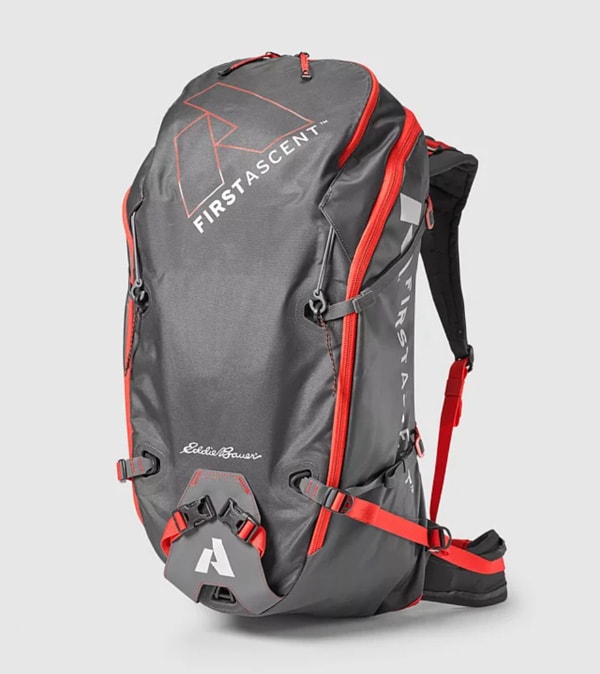
Mudder Waterproof Bags
Even though my bag is water resistant, it will get wet in a downpour, so I always have waterproof bags to store electronics and important documents like my insurance papers and wallet. These came in handy on this trek since it was during monsoon season!
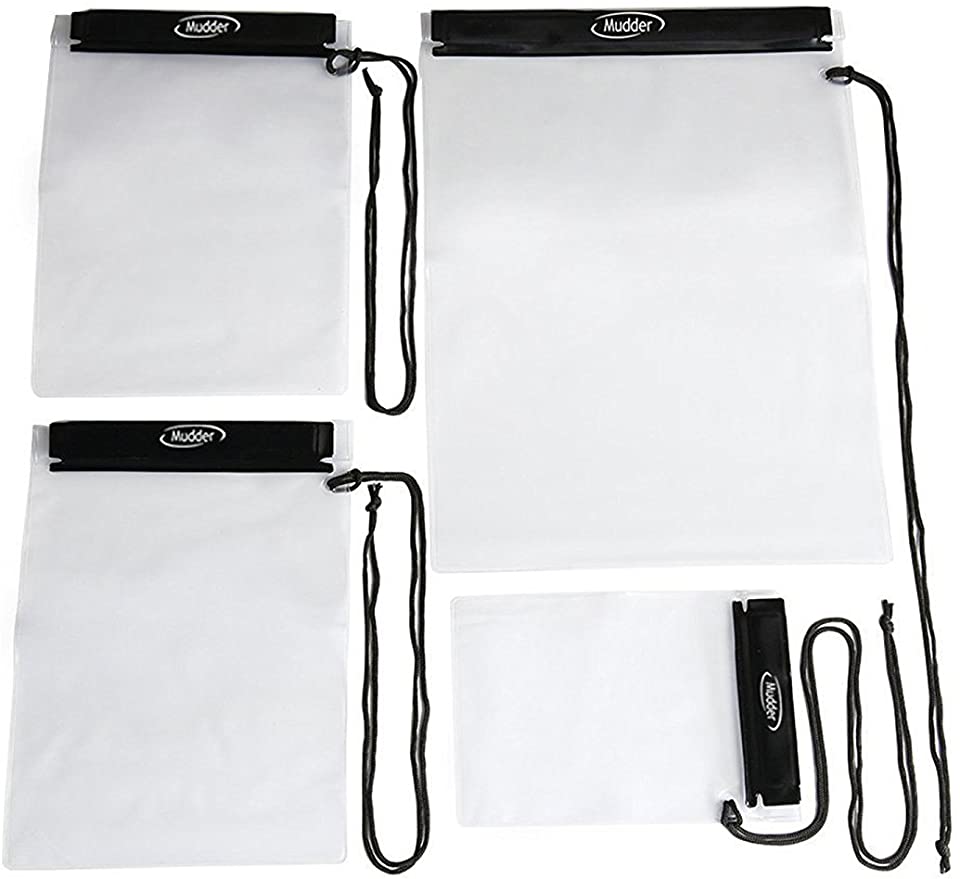
Packing Cubes
I love packing cubes. If you have a 100L duffel bag, everything will get lost in it. I have these cubes and use each one for something different. One for snacks, medicine, socks/underwear, clothing, etc. It makes packing and unpacking every single day a little bit less annoying.

Water Bottle
Plastic water bottles cause unnecessary waste. Please bring a reusable water bottle and a water purification method.
Backpack Rain Cover
We had beautiful weather so I only needed this once, but it’s a must if your backpack isn’t waterproof.
Plastic Bag for Laundry
I bring a simple grocery store plastic bag for laundry to keep it separate from my other clothes. I only put dirty underwear in it as the larger items like pants and shirts wil
Ziplock Bags
Never underestimate the ziplock bag. These come in handy more often than you would think.
Clothing & Accessories for Everest Base Camp
Down Coat
Before I left, some people told me I wouldn’t even need a down coat. I’m glad I didn’t listen because there were some nights that were freezing, and I walked around the tea houses wearing mine. We also got snow one day and some pretty freezing winds another. I invested in an Eddie Bauer Microtherm Coat since then, and I love it. It’s super compact and can be zipped down into its own pocket.
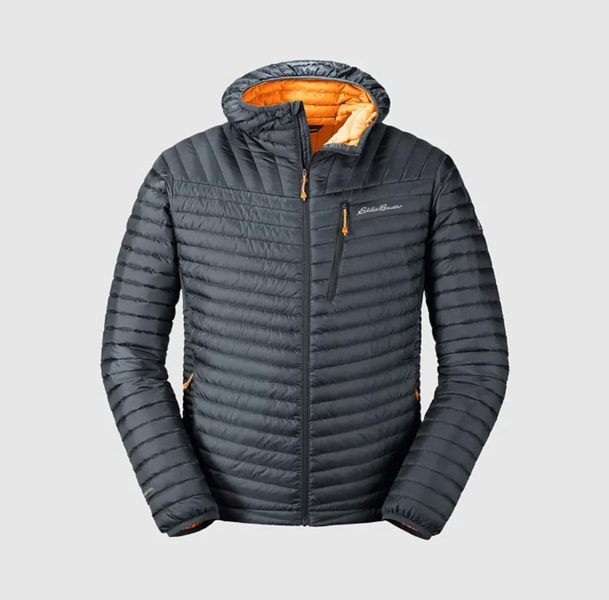
Fleece Jacket
I lived in my fleece jacket. I wore it under my coat on cold days, over my t-shirt on warm days, and to bed. I purchased a nice fleece because it’s one of the items I wear the most while trekking.
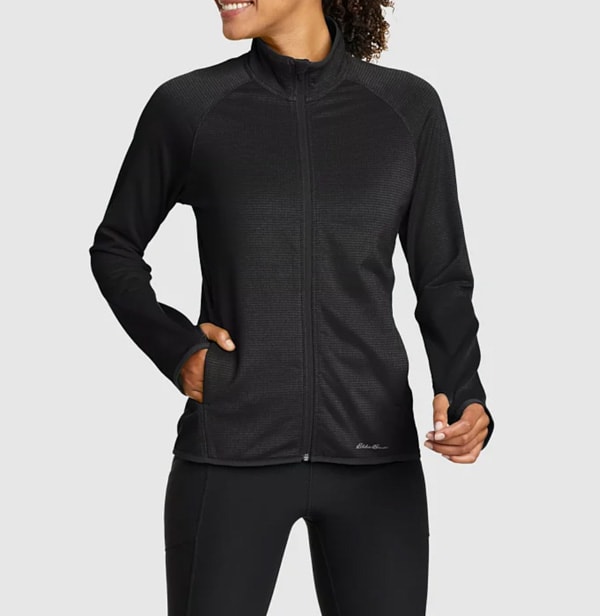
Raincoat / Poncho
A raincoat or waterproof jacket is a must. I wore mine most days in the morning and when we were trekking in the shade. It didn’t rain on our trip, so luckily I didn’t need it for that.
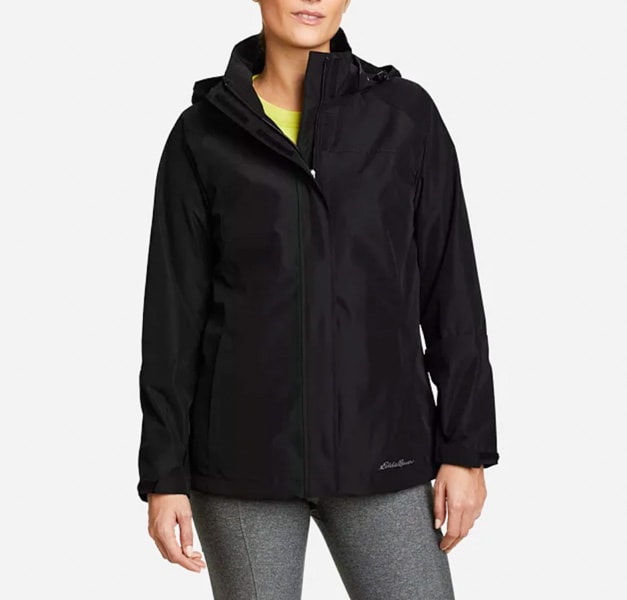
Quick Dry T-Shirts (2)
Quick dry t-shirts are a must. Some days were so hot that I was sweating, and by the afternoon it’d be freezing. Having wet clothes on is extremely uncomfortable. It also made it easier to wash them along the way.
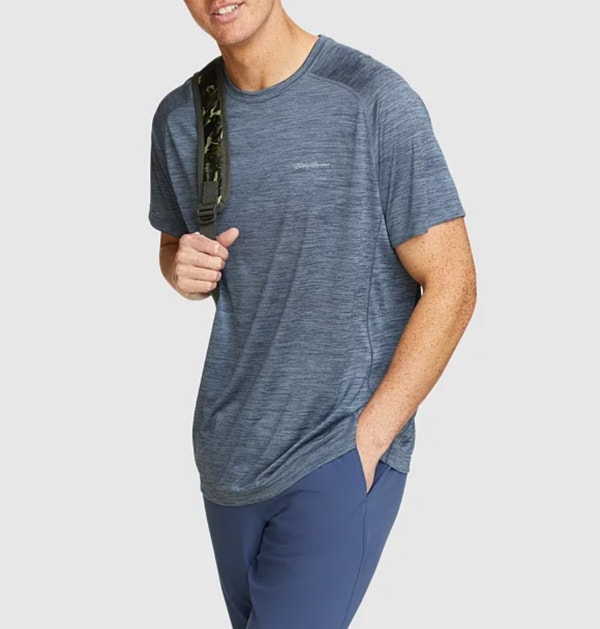
Quick Dry Long Sleeve
It’s good to have one long sleeve quick dry shirt for colder days and sunrise hikes. Since this trek goes high in altitude it can get really cold and windy.
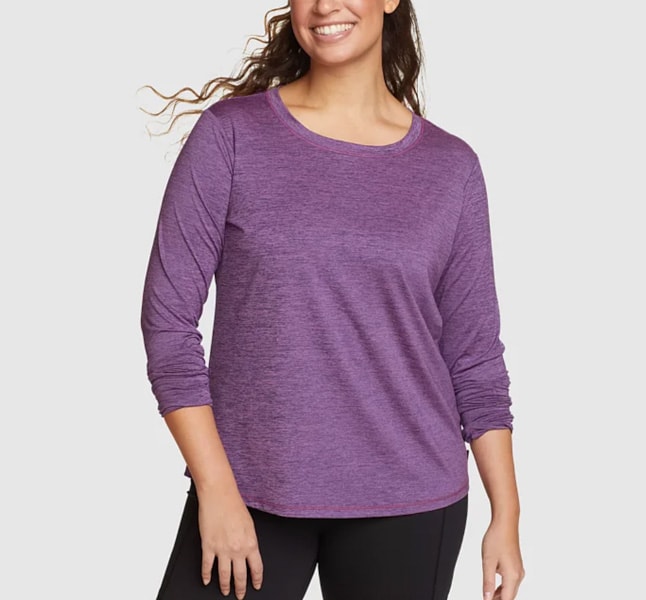
Lightweight Trekking Pants (2)
I’ve invested in a good pair of lightweight trousers. I have these jogger pants which I can also wear when I’m not trekking. Unlike a lot of trekking trousers, these are actually cute. On hot days, they’re super lightweight and comfy. On cool days, I can layer them with leggings and then remove a layer as it gets hotter.
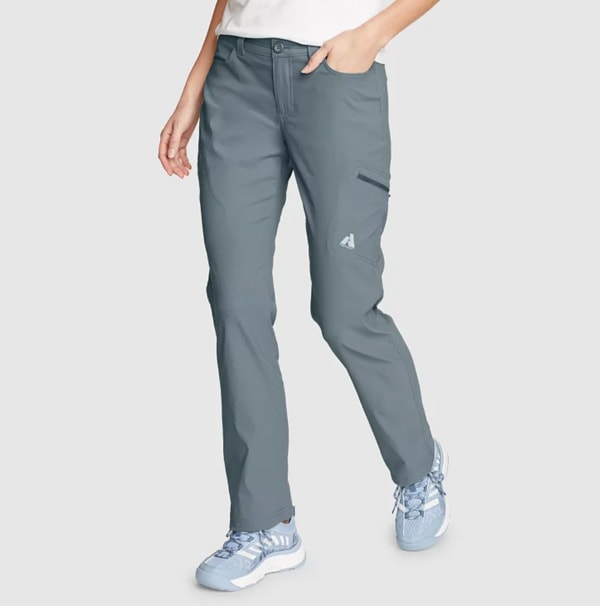
Leggings
I wasn’t sure about bringing yoga leggings but was super happy I did. They are great for layering under trekking trousers in the morning when it’s cold and then striping down in the afternoon.
Thermals
I definitely splurged on the thermals since I’m always cold. These came in handy at the highest altitudes, especially at night. I’d read that some people get two pairs (one for day and night), but I found one set to be sufficient.
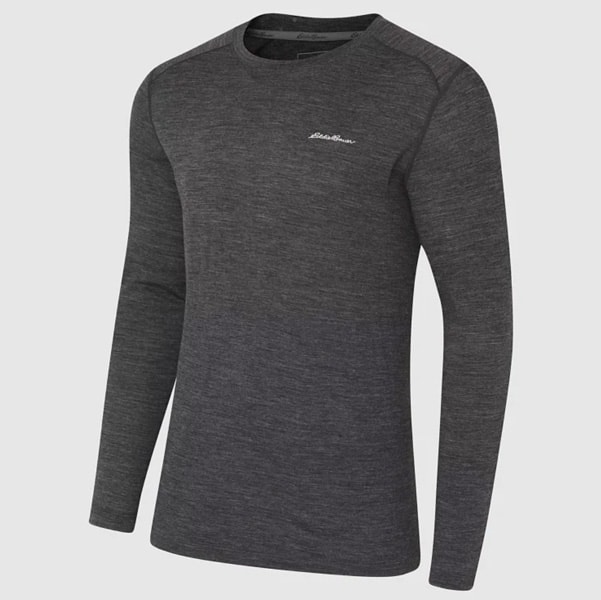
Buff (Multiclava)
I’d never owned a buff before, but these are a must. They make it easier to breathe and keep dust out of your face.

Hiking Socks (4)
I brought two pairs of wool ankle socks and two tall pairs. I managed to wash each pair once and kept one pair of ankle socks separate for sleeping. This was in November, so three pairs of short socks and one pairs of tall socks is better for warmer months.
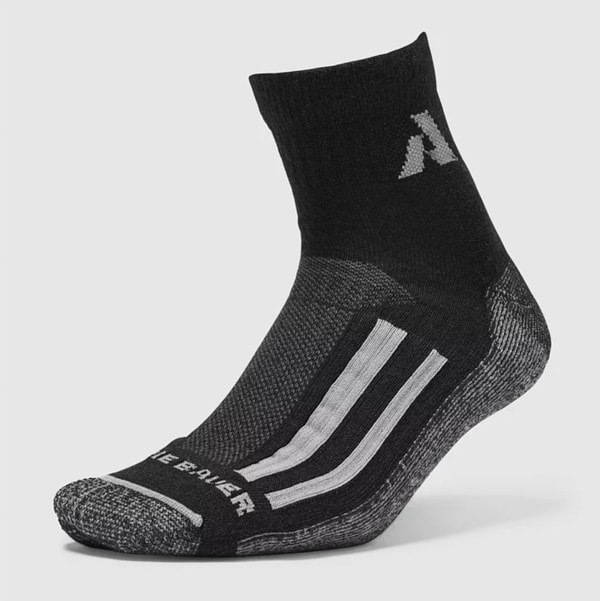
Hiking Boots
I had a lightweight hiking boot / sneaker hybrid for this trek and really liked them. Now, I’ve upgraded to more of a hiking boot than a sneaker, and they’re amazing. I do more difficult treks now, so my La Sportiva boots are great for grip, balance, and ankle support. Whatever you choose, make sure you’ve broken them in beforehand.
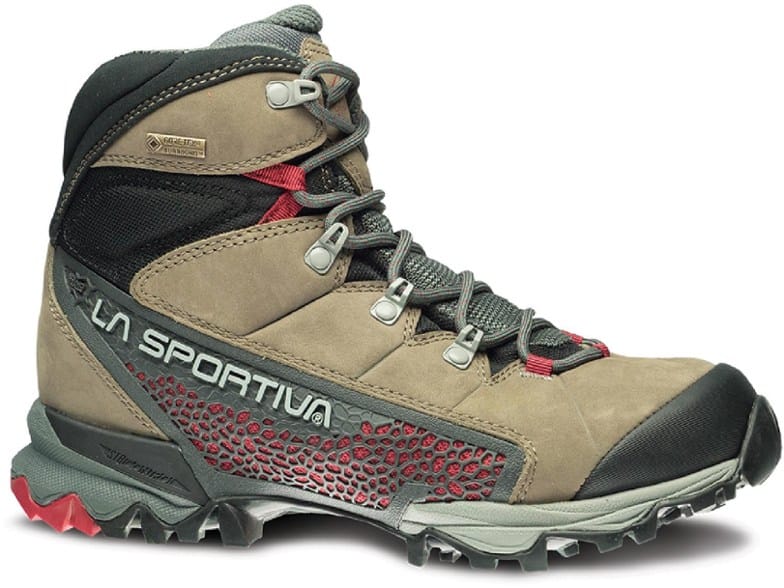
Hiking Sneakers
If you are just starting out with your hiking journey and you’re not ready to spend $200-$300 on boots, then I’d recommend getting a boot/sneaker hybrid. The first two treks I did, I had a hybrid shoe and it was great. It’s also a fantastic option if you’re backpacking and want a shoe that can be for hiking or normal walks through cities. I was recently gifted the NORTIV 8 hiking sneakers and love them. They’re a great affordable option.
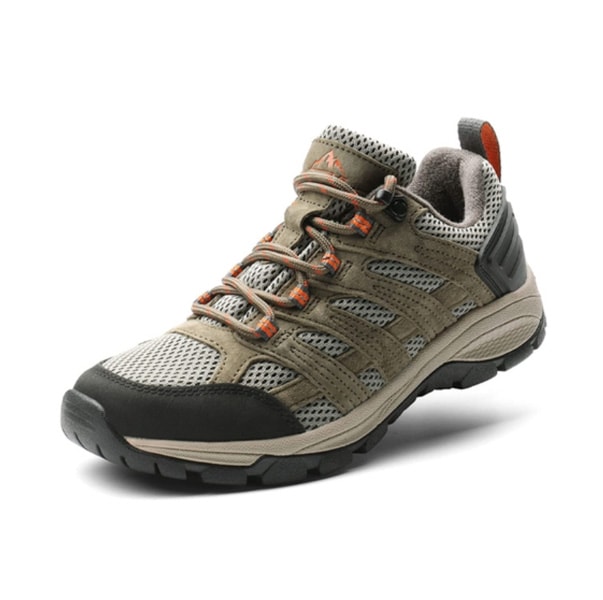
Sandals
These are handy for walking around teahouses or using the toilets at night. I recommend buying the lightest ones you can find.
Summer Hat
I’m not big on baseball caps, but I wore mine a lot on this trek. The sun is strong on the mountain, and a cap really helps keep the sun off your face and out of your eyes. If you want a better quality for sun protection, I recommend a hat with UV protection
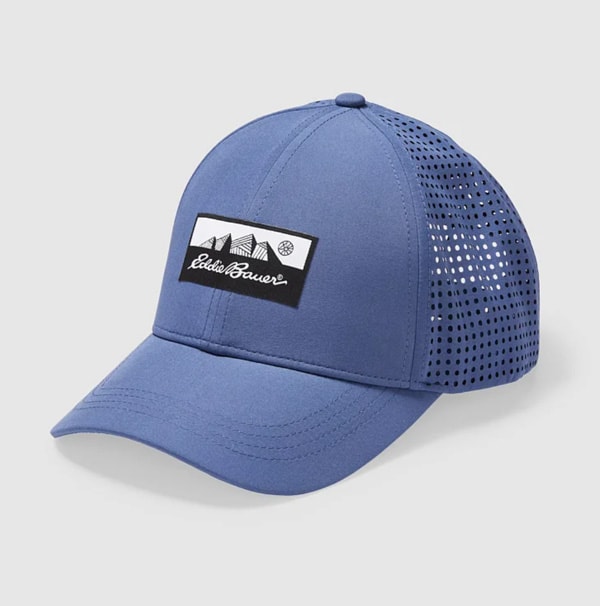
Winter Hat
I lived in my winter hat. In fact, someone in my group said he’d never seen me without it on.
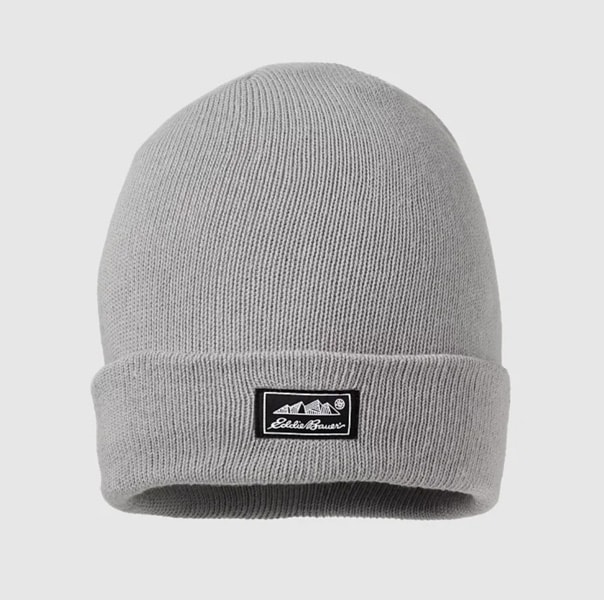
Polarized UV Sunglasses
The ones I bought in Kathmandu were overpriced and cheaply made, so I recommend buying these before you arrive. I ended up getting these polarized sunglasses for my next trek, and I love them.
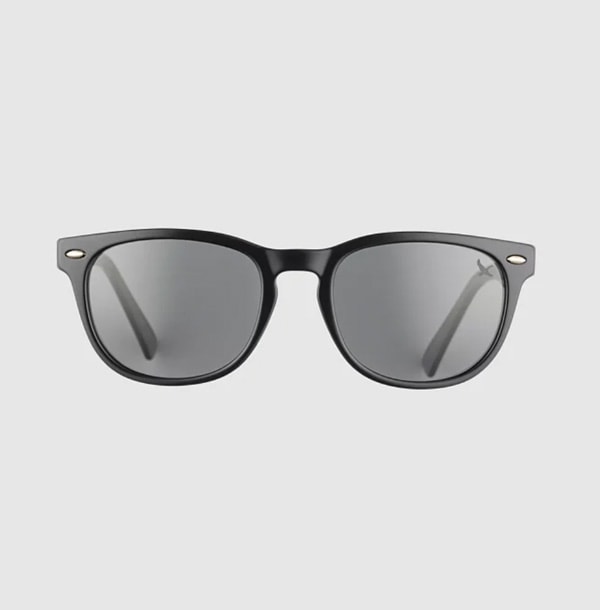
Gloves
Warm gloves are necessary, especially if you plan to do the sunrise treks. Some people like thick gloves, but I prefer thin silk glove liners. My hands get really hot when I walk.
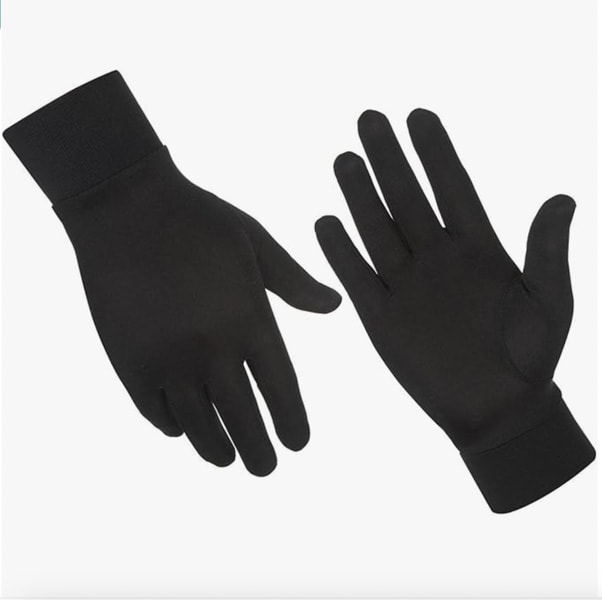
Sports Bras (2)
I brought two quick dry sports bras from home which were easy to pack and wash. I usually wear one during the day and switch when we arrive at teahouses so that it has time to dry by morning.
Underwear (10)
Doing laundry was harder than I thought. There wasn’t always a place to dry clothes, and often we arrived at places just as it got cloudy. While we could hang things by the fireplace in lodges or off of our bags during the daytime, underwear were a little trickier. I pack extra underwear to avoid doing laundry every other day.
Pajamas
I used a long sleeve cotton t-shirt as a sleep shirt and loved it. I definitely recommend long sleeves since I wore a fleece over it and was still cold most nights. I slept in my leggings or thermal bottoms at night.
Gaiters
I found these to be a waste of money. I never used them once and to be honest I’m not really sure why you’d need them unless you were trekking in really deep snow. So you will only need these if you are going in months when snowfall is heavy.

Toiletries for Everest Base Camp
Pro Tip: Think about the weight of every item when you choose it. On my first trek, I packed a full sized toothpaste, a heavy hairbrush, and so many excessive items. Find the lightest and smallest version of everything.
Wet Wipes
On days when it was too cold to shower, I used wet wipes. Baby powder was a nice treat for my feet at the end of each day. It also worked as a dry shampoo on greasy hair days.
Quick Dry Towel
If you plan to shower along the way, make sure to bring your own quick dry towel since tea houses won’t provide one.
Bug Repellent
I like Badger Bug Balm which is a natural bug repellent. It’s a solid stick, so it won’t spill in your bag and it works very well!
Sun Protection
I bought a SPF sports sunscreen which stays on even when you sweat. I also had an SPF 50 lip balm which was handy on really hot days.
Tooth Care
I brought a travel sized toothbrush, toothpaste, and some dental floss.
Hand Sanitizer
There isn’t always soap available, so hand sanitizer is a great backup.
Deodorant
Pack a small travel sized deodorant.
Vaseline
We always carry a tiny vaseline with us. Trekking has an interesting way of chapping one’s lips and nostrils. On one trek, the combination of the strong sun and freezing cold winds left my nose looking like I had a severe burn for weeks. We apply vaseline multiple times a day to avoid this.
Toilet Paper
You’ll need to pack your own toilet paper. I paid 395 rupees ($3.95) for four rolls in Kathmandu. On the mountain, it can cost 500 per roll ($5).
Feminine Hygiene
Make sure to bring whatever pads/tampons you’ll need as they are hard to find on the trekking trail and are expensive.
Hair Care
Bring hair ties and a lightweight travel hairbrush (or comb). Don’t make the mistake of packing a heavy brush.
Shower Supplies
I bought individual packets of shampoo and conditioner for 5 rupees each as I went. I also brought a small bar of soap which came in handy for laundry as well.
Nail Clipper
Pretty self explanatory, but make sure to get the kind with the little thing that cleans under your nails. Without a place to wash your hands properly, you’ll get a lot of dirt under there.
Fabric Softener Sheets
I brought fabric softener sheets from home. I put them in with my clean clothes and laundry to make sure everything stayed smelling fresh over during the trek. They definitely made a difference.
Snacks for Everest Base Camp
Tea Bags or Coffee
Ordering tea in the mountain can be expensive. A cup can range from 50 rupees to 250 rupees. Ordering hot water and bringing your own tea bags or instant coffee is a lot cheaper.
Trail Mix
Definitely have some trail mix with you. This is great for tea breaks, early morning hikes, extra altitude treks in the afternoon, etc. 5 small bags is good.
Granola Bars
A variety pack of granola bars is also great for snacking. I like to bring 5 with me.
Chocolate (bag of minis)
This was the best thing I brought. Chocolate on the mountain can be pretty expensive, so bite sized Kit Kats were perfect and lasted my entire trek.
Medicine/First Aid Kit
Diarrhea Medicine
Again, I didn’t need this, but I was happy I had it just in case.
Activated Charcoal
Activated charcoal is great for treating food poisoning. I always bring about 10 tablets with me. Talk to a doctor before you take this as it is strong enough to cancel out some prescription medications.
Electrolytes
I like Nuun electrolytes the best because they taste good. I didn’t need mine since I drank 3 liters of water a day, but I’m glad I had them just in case. Those who had diarrhea needed electrolytes every day.
Knee or Ankle Brace
Going downhill takes a toll on your knees so having a brace can be handy.
Bandaids, Athletic Tape, Ace Bandage
These were great in case of an emergency or blisters, but I didn’t need to use any during my trip.
Antiseptic Towelette, Neosporin
I didn’t need these, but you never know.
Water Purification Tablets
Water gets more and more expensive the higher you get. 1 liter at the higher altitudes can cost $4, and you need to drink about 3 liters a day. Water tablets are so easy to use and take up no room in your luggage.
Vitamins
I bring a few tabs of vitamin C, B, olive leaf, zinc and echinacea for immune support so that I don’t get sick. I also bring electrolyte powder in case someone gets dehydrated.
Antibiotics
Luckily, I did not need antibiotics, but I know a few people who did. A few people in our group got travelers diarrhea, and one got food poisoning.
Prescription Drugs
Bring anything you need with you as there are no pharmacies on the trek.
Cold Medicine
I’m so glad I had cold medicine with me. I got a nasty cold which lasted the entire second half of the trek. Make sure not to take any cold medicines that have a sleeping aid at altitude.
Advil/Tylenol
I brought some pain medication just in case. I didn’t need any, but a guy in my group had a terrible headache one day, and I was able to help him out.
Diamox
Diamox is medicine for altitude sickness. I spoke with my guide and decided not to take this while ascending. I didn’t have any problems, but I was glad I had it with me just in case I needed it.
Throat Lozenges
I should have bought two bags. My throat was so dry that I ended up coughing up blood one day. I also woke up several nights coughing and felt awful for my roommates who had to listen. Almost everyone on my trek had a sore throat at least one day.
Sleep/Night Time
Sleeping Bag
I rented a four seasons sleeping bag up to -20 degrees. Other people had lighter ones, but we were all freezing, so I’d go with the warmest one possible. Since this trek, I’ve never carried a sleeping bag with me. I just use the blankets the teahouses provide to save room in my bag.
Silk Sleeping Bag Liner
Since I was renting a sleeping bag, I wanted to have a liner as well. It added some extra warmth and was worth the extra cost.
Eye Mask and Earplugs
I didn’t use mine, but the walls are thin in the tea houses so these are helpful for light sleepers.
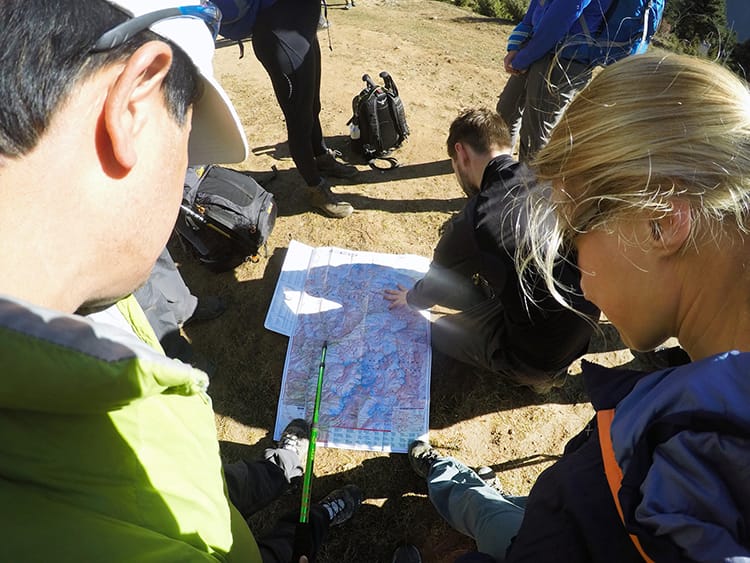
Electronics for Everest Base Camp
GoPro, Spare Batteries, Charger
I opted to only bring my GoPro instead of my traditional camera. It’s small size and battery life made it an obvious choice. I brought two extra fully charged batteries as well. I had to charge each battery one time to last the entire trip.
Cellphone & Charger
I charged my phone three times and paid for WiFi twice. If your phone has a good camera, you can avoid carrying a GoPro or heavy camera.
SIM Card
I had Ncell and managed to have service for several days of the trek. At higher altitudes it didn’t work. You can get a card for under 1000 ($10) but may need to search for a good deal in Katmandu as some places tried to charge me triple. You can read my post about SIM card options.
Travel Adapter
This adapter came in handy twice when our room actually had an electrical socket, and we didn’t have to pay to charge.
Maps.me Downloaded
I always have a backup plan and Maps.me will tell you the trekking route while offline. That way if you ever get lost, you can have something to track with.
Headlamp
A lot of the tea houses work on solar power and sometimes the electricity runs out at night, so you’ll need a headlamp to go to the bathroom. We also did sunrise treks which started before it was light outside.
Kindle
I almost didn’t bring my Kindle and changed my mind at the last-minute. There is a lot of down time, and I finished two books on the trek. Definitely stock it full of books before leaving because WiFi is expensive.
Power Bank
Electricity is expensive on the mountain, so I’d recommend getting a solar panel and power pack. I only charged my battery pack one time for 300 rupees ($3), but I know some people who paid a lot to charge electronics.
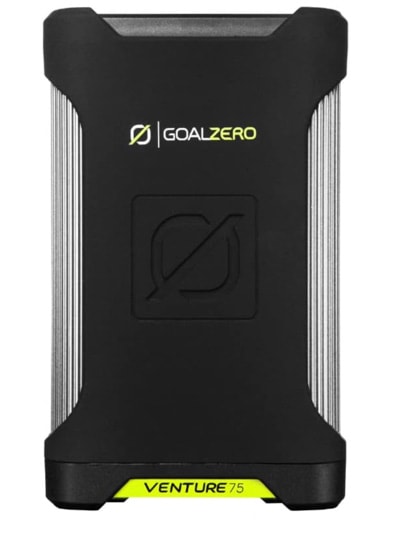
Other Items Needed for Everest Base Camp
Trekking Poles
Trekking poles are a personal preference. I did the whole trek except for one steep downhill section without poles. Others in my group used them the entire time. Since this trek, I’ve started to use trekking poles regularly. I bought this pair and they’re great for the price!
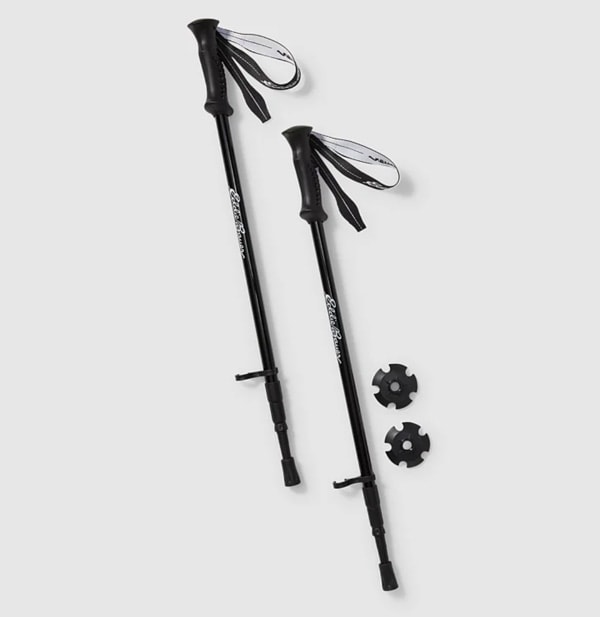
Money
Make sure to bring money in small denominations (500, 100, and 50) to make it easier for teahouse owners. If you only carry 1,000 rupee notes, it will be difficult to get change when you pay your bill.
Entry Permit
Carry your entry permit with you at all times as there are checkpoints on the way. You’ll need an entry permit to get into Sargamatha National Park. It can be purchased at the Nepal Tourism Board in Kathmandu before leaving. It costs around $30.
Passport Copy & Passport Photos
No one ever checked my passport, but I did need passport photos for my permits to enter the park.
Copy of Travel Insurance
Travel Insurance may be required if you are trekking with a tour company. Even if you are trekking alone, it’s good to have this in case you need to be helicopter evacuated. Consider getting travel insurance if you want peace of mind during your travels.
Crampons
It only snowed a little when I did the EBC trek, but it can snow a lot there at different times of the year. Check with your guide about bringing crampons. They are kind of heavy to carry, but if it snows they make life so much easier.
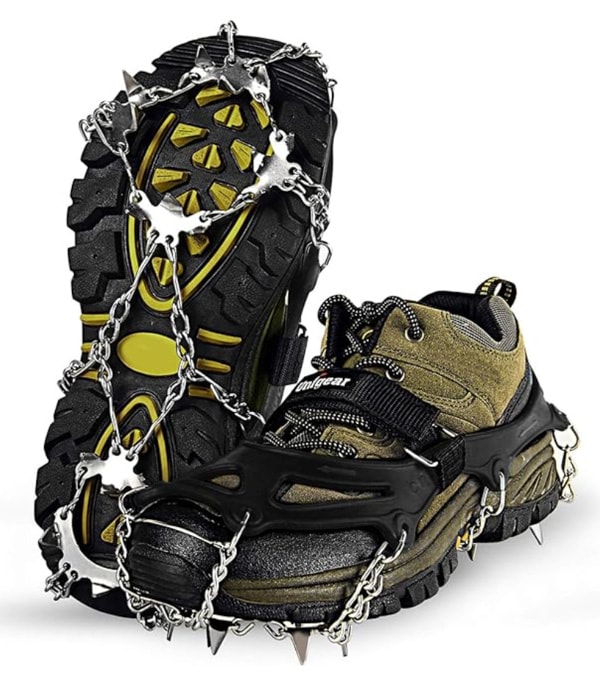
Map of the Area
I always keep a map of the area. It’s fun to take it out each night and go over tomorrow’s route, see the altitude gains, and plan lunch breaks. You can buy one in Kathmandu or Pokhara.
Playing Cards
Someone else will always have playing cards, but I recommend bringing a pack just in case. Learn a few games before you leave so you have some options to play when trekking. We had a hilarious time playing “Bullshit” with an entire teahouse. We also had an epic game of UNO going on one trek.
Duct Tape
This seems like a weird thing to recommend, but you never know when you’ll need it. Bring a small roll just in case. I once used it to keep a shoe from falling apart while walking back 5 hours after it busted open (a lesson in buying good quality shoes).
Shopping in Nepal
Planning to shop when you arrive? On my first trip to Nepal, I was backpacking for 9 months in Southeast and South Asia. I didn’t have room in my pack to carry a bunch of heavy winter clothes with me, so I ended up buying everything in Thamel (the tourist hub in Kathmandu). I arrived a few days early, so I had plenty of time to search for things. I learned quickly that I’d need to check multiple stores and negotiate a lot.
Recently, I was approached by Mount Ready to try out their new system. They make the experience a lot easier. You simply go to their website, pick your trek and they have a pre-arranged pack with everything in it. It’s the same stuff you buy in Thamel (including knock offs) but you don’t have to spend days running around and negotiating. The prices are fair and you can add or remove stuff from the pack. You show up at the store, and everything is picked out for you. All you have to do is try it on and pick the colors you like. It’s super simple.
Before recommending them, I wanted to test it out myself, so I had them put together a pack for the Annapurna Circuit. I removed a few things, changed some sizes and styles and checked the quality of the clothes. If you’re doing a trek once and don’t want to invest a lot of money, then this is the way to go. I started out with a lot of items from Thamel and slowly upgraded my pack with the Eddie Bauer products listed above.
I used almost everything I brought with me except a few emergency items. Have any questions about my Everest Base Camp packing list? Leave them in the comments.
You might also like…

Michelle Della Giovanna
Writer at Full Time Explorer
I’m just your average New Yorker who quit her job in the fashion industry to explore the world. Come find out what it’s like to trade in five-inch heels for squat toilets.


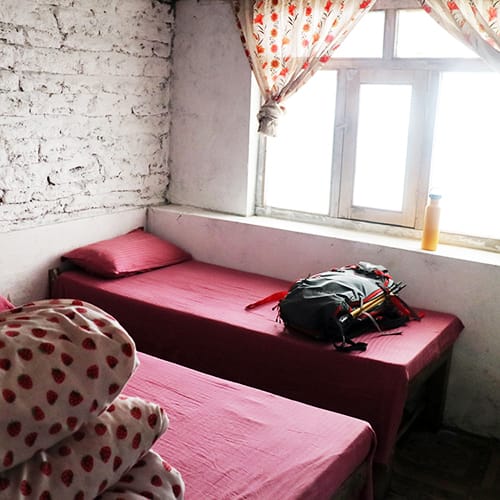
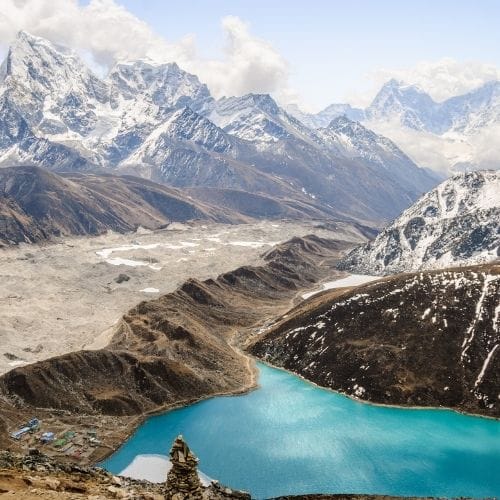
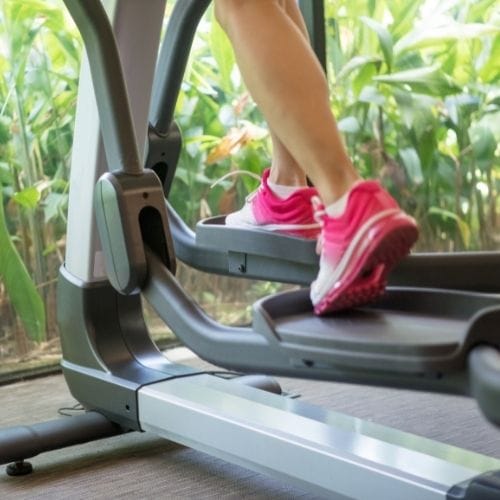
Love the list for EBC.!! I’m going to print out as I start packing for my Nov trek.!.! NJ girl : )
Thanks Mindy! I’m so happy you found it helpful!